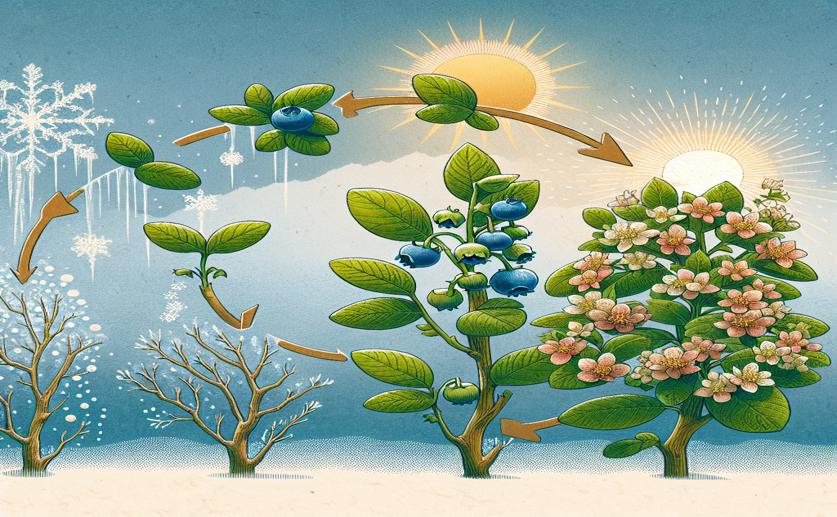
How Blueberry Genes Could Control When Flowers Bloom After Cold Spells
Jenn Hoskins
3rd March, 2024

Image Source: Natural Science News, 2024
Key Findings
- Researchers at Beijing Forestry University found genes that help blueberry plants wake up and flower
- Certain genes peak in activity when blueberry buds leave dormancy, signaling it's time to bloom
- Plant hormone treatment boosts these genes' activity, aiding the transition from dormancy to flowering
References
Main Study
1) Characterization of the MIKCC-type MADS-box gene family in blueberry and its possible mechanism for regulating flowering in response to the chilling requirement.
Published 29th February, 2024
https://doi.org/10.1007/s00425-024-04349-7
Related Studies
2) Genome-Wide Identification and Analysis of the MADS-Box Transcription Factor Genes in Blueberry (Vaccinium spp.) and Their Expression Pattern during Fruit Ripening.
3) Comprehensive Biochemical, Physiological, and Transcriptomic Analyses Provide Insights Into Floral Bud Dormancy in Rhododendron delavayi Franch.
4) Intronic long noncoding RNA, RICE FLOWERING ASSOCIATED (RIFLA), regulates OsMADS56-mediated flowering in rice.
5) Comparative Analysis of the MADS-Box Genes Revealed Their Potential Functions for Flower and Fruit Development in Longan (Dimocarpus longan).



 24th January, 2024 | Jenn Hoskins
24th January, 2024 | Jenn Hoskins